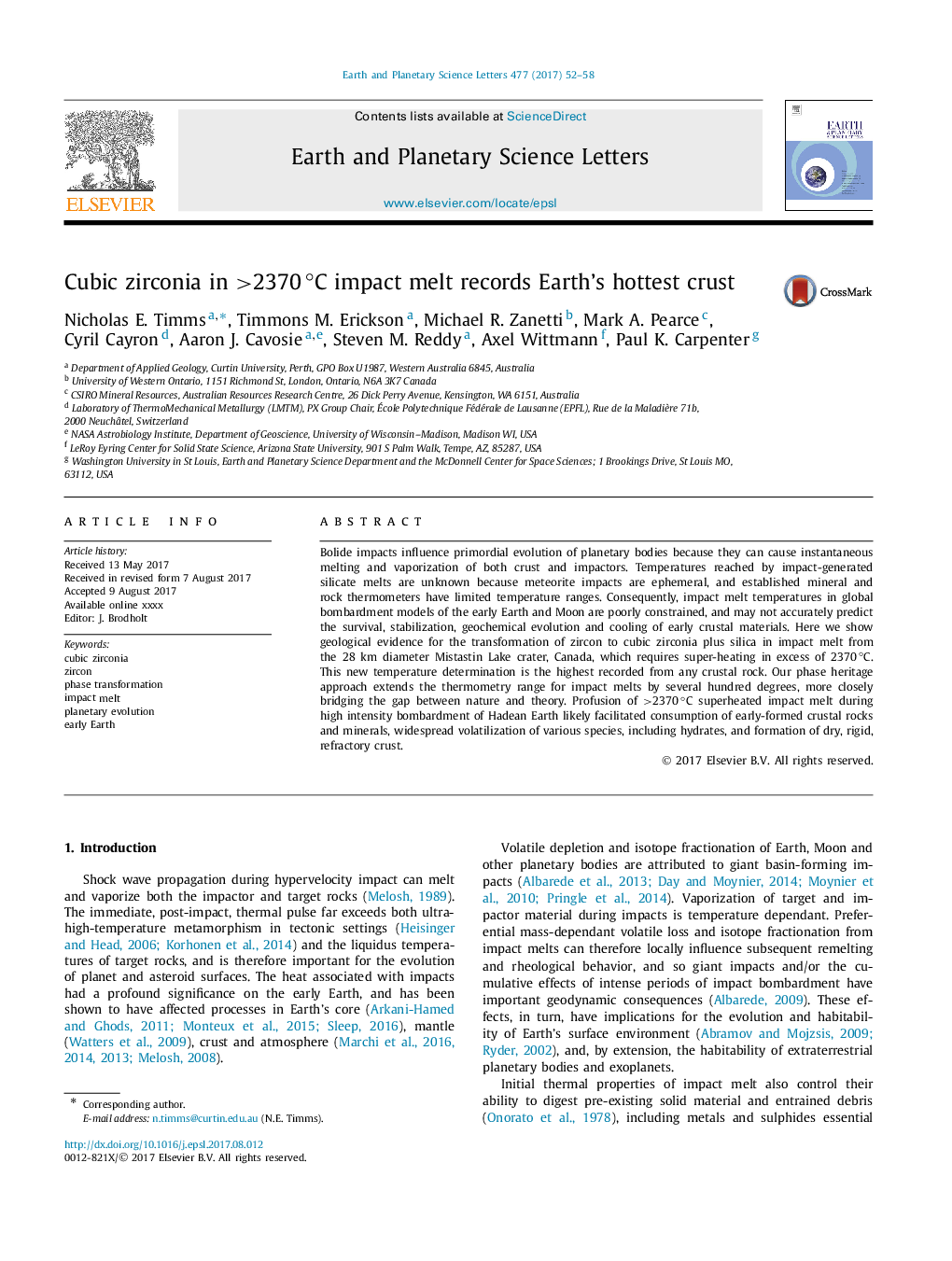| Article ID | Journal | Published Year | Pages | File Type |
|---|---|---|---|---|
| 5779532 | Earth and Planetary Science Letters | 2017 | 7 Pages |
Abstract
- Zircon has partially dissociated in impact melt rock from a Canadian impact crater.
- Former presence of cubic ZrO2 is crystallographically encoded in reaction rims.
- Cubic zirconia required >2370â°C melt, which is hottest recorded on Earth's surface.
- Such superheated melt susceptible to devolatilization resulting in dry rigid crust.
- Potential global effects for crustal evolution during bombardment of early Earth.
Related Topics
Physical Sciences and Engineering
Earth and Planetary Sciences
Earth and Planetary Sciences (General)
Authors
Nicholas E. Timms, Timmons M. Erickson, Michael R. Zanetti, Mark A. Pearce, Cyril Cayron, Aaron J. Cavosie, Steven M. Reddy, Axel Wittmann, Paul K. Carpenter,
